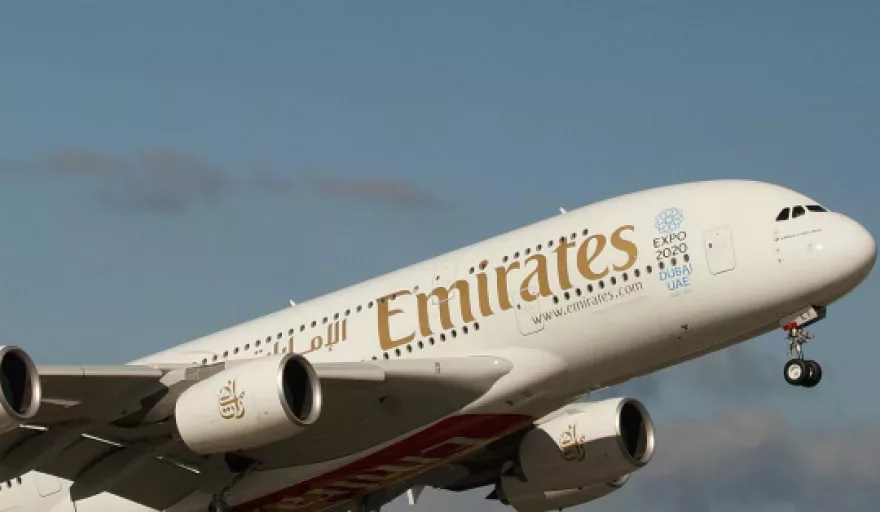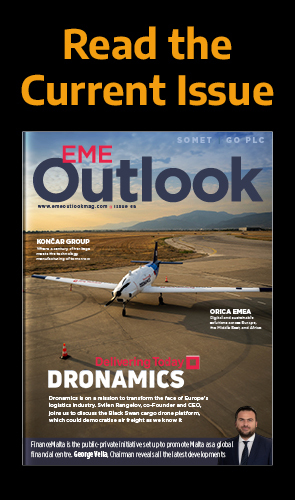INTRODUCTION
The oil price volatility since the middle of 2014 has created turbulence in the airplane financing market in the Middle East.
In February, 2015, Reuters carried a story about how Gulf banks were helping to ‘underwrite’ the regional airplane boom but by October, a Gulf News article carried an article about a ‘cautious outlook’ in the same sector. As a result of the bumpy ride in sentiment recently, there is an increased need for airlines to diversify their airplane funding needs beyond regional banks who provided about two-thirds of the funding.
The primary reason for the 180 u-turn in bank appetite for airline finance is that the oil price is no longer being seen as a temporary phenomenon but is becoming more entrenched.
The IMF’s Regional Economic Outlook for the Middle East and Central Asia released in October, 2014 was premised on oil prices of $102 an oil barrel (/bbl) for 2014 and $99/bbl for 2015. During October, Brent crude traded at $85/bbl and fell to $45/bbl by February. By contrast, the IMF’s most recent outlook presumes $51/bbl in 2015 and $50/bbl in 2016.
During the window that opened up for airline deals before oil prices fell, several significant Islamic financing transactions opened up avenues for diversification of funding sources. A few of these transactions are particularly notable as indication of how Islamic capital markets and non-bank sources of Shariah compliant capital could grow; especially if bank sources dry up or become less favoured by regional banks.
NOTABLE TRANSACTIONS
The first notable transaction dates to 2013 when Emirates issued a 10-year amortizing sukuk that was a notable departure from previous sukuk which were based more on leasing (ijara) structures using tangible assets like an ijara sukuk issued by AirAsia in 2008.
Emirates’ first sukuk in 2005 was a musharaka (partnership) structure used to construct its engineering centre and head office; it didn’t even include airplanes. Later sukuk from the likes of AirAsia and GE Capital that did include financing of airplanes were based on the ijara structure.
The Emirates Medjool sukuk used a wakala structure where the investors’ funds were used to purchase the rights to travel, measured using Available Tonne Kilometres (ATKM); an industry measure. The ATKM were sold by Emirates to the SPV and Emirates was appointed to serve as the agent for investors and sales of the ATKM were used to fund the periodic payments.
At maturity, Emirates purchased the unsold ATKM to redeem the sukuk. In November, 2014, flydubai followed Emirates’ lead with its own $500 million wakala sukuk using ATKM as the asset.
The uniqueness of the Emirates structure was that it incorporated intangible assets via an agency agreement which has become a more common way to structure sukuk, particularly for asset-light issuers. Most airlines are not asset-light in the sense that they lack tangible assets in their business but many rely on leasing arrangements to finance their acquisition of new planes. Therefore, having a Shariah compliant structure that can facilitate financing, without passing beneficial ownership over the planes themselves, increases the flexibility for airlines.
The following year, another relatively rare structure (for Islamic finance, not for the airline sector) was used by Export Development Canada which provided financing to Ibdar Bank in Bahrain and Palma Capital in Dubai to purchase four Bombardier planes to lease to Ethiopia Airlines.
The unique aspect of this transaction was the ability for an export credit agency to be comfortable with a Shariah compliant structure. In an environment where regional banks in the GCC are shying away from rapid growth in new airplane financing, having export credit agencies from other markets be able to support financing adds another source of financing.
The two forms of financing structures described above were combined in a novel way earlier this year when Emirates issued another sukuk for $913 million to fund airplane purchases. In addition to the use of intangible assets (ATKM), the sukuk had a forward lease structure to prefund the purchase of airplanes and carried an export credit guarantee from UK Export Finance, the UK’s export credit agency. Again, like the Ibdar Bank-Palma Capital transaction with EDC, the use of an export credit agency helps to broaden the sources of financing to investors who would otherwise not invest in Emirates debt.
Finally, earlier this year, Saudi Arabian Airlines agreed to the largest airline deal using Islamic finance for planes worth $8.2 billion at list prices. The financing comes from the International Airfinance Corporation, a plane-leasing fund set up in 2014 with $100 million in equity provided by Airbus and the Islamic Development Bank that expected to raise $1 billion in equity and reach $5 billion in combined debt and equity over two years.
The participation of the AAA-rated Islamic Development Bank in the fund is likely to increase the appetite of investors and allow for better diversification of funding than would be possible by the airline on its own.
DEVELOPMENT OF SUKUK
As the low oil price environment continues – there is little to suggest that the supply glut that is driving today’s low prices will dry up soon – there will be more pressure for airlines to diversify their funding sources. Relying on Islamic banks and their more liquid balance sheets provides one avenue but they are seeing their liquidity reduced by government withdrawals of deposits and in any case cannot be expected to fill the entire funding needs for Gulf carriers.
Based on current list prices, the order book is $100 billion for Emirates, $57 billion for Qatar Airways and $28 billion for Etihad Airlines. In comparison, Al Rajhi Bank, the largest Islamic bank in the world according to the WIBC Leaderboard, had assets of $82 billion at the end of 2014.
Islamic capital market transactions and export credit agencies providing financing directly or through sukuk guarantees offers a way to diversify funding sources and also introduce Islamic finance to investors who would not otherwise consider it.
One market where sukuk have rarely been issued is the US which has a sophisticated airplane finance market of equipment trust certificates (ETC) and enhanced ETCs (EETC). The US market has not been entirely left out of the picture, however.
GE Capital issued a $500 million sukuk in 2009 which was redeemed and not reissued in 2014. The GE Capital sukuk used conventional airplane leases as the underlying assets. It was an outlier coming at a time when GE Capital’s access to finance was stressed after the financial crisis, but there remains a possibility for sukuk to be used to finance the purchase of US-made airplanes. Boeing – which has orders from all three of the largest Gulf carriers – previously expressed interest in airplane sukuk, but has not been as proactive in the market as Airbus has and no sukuk has materialised.
One headwind for Boeing compared to Airbus and Bombardier is the more uncertain status of export credits with the Export-Import Bank being shuttered at the end of June, 2015 because of political disputes over reauthorising its charter.
Even if it is reauthorised, the politicisation of its activities and the ongoing dispute between US airlines and Gulf airlines could hinder the development of sukuk using a similar structure to the Emirates-UKEF sukuk. This leaves Europe and Canada as the most likely market for further airline sukuk, especially since these markets have both airplane manufacturers and governments willing to provide guarantees to Shariah compliant travel.


































